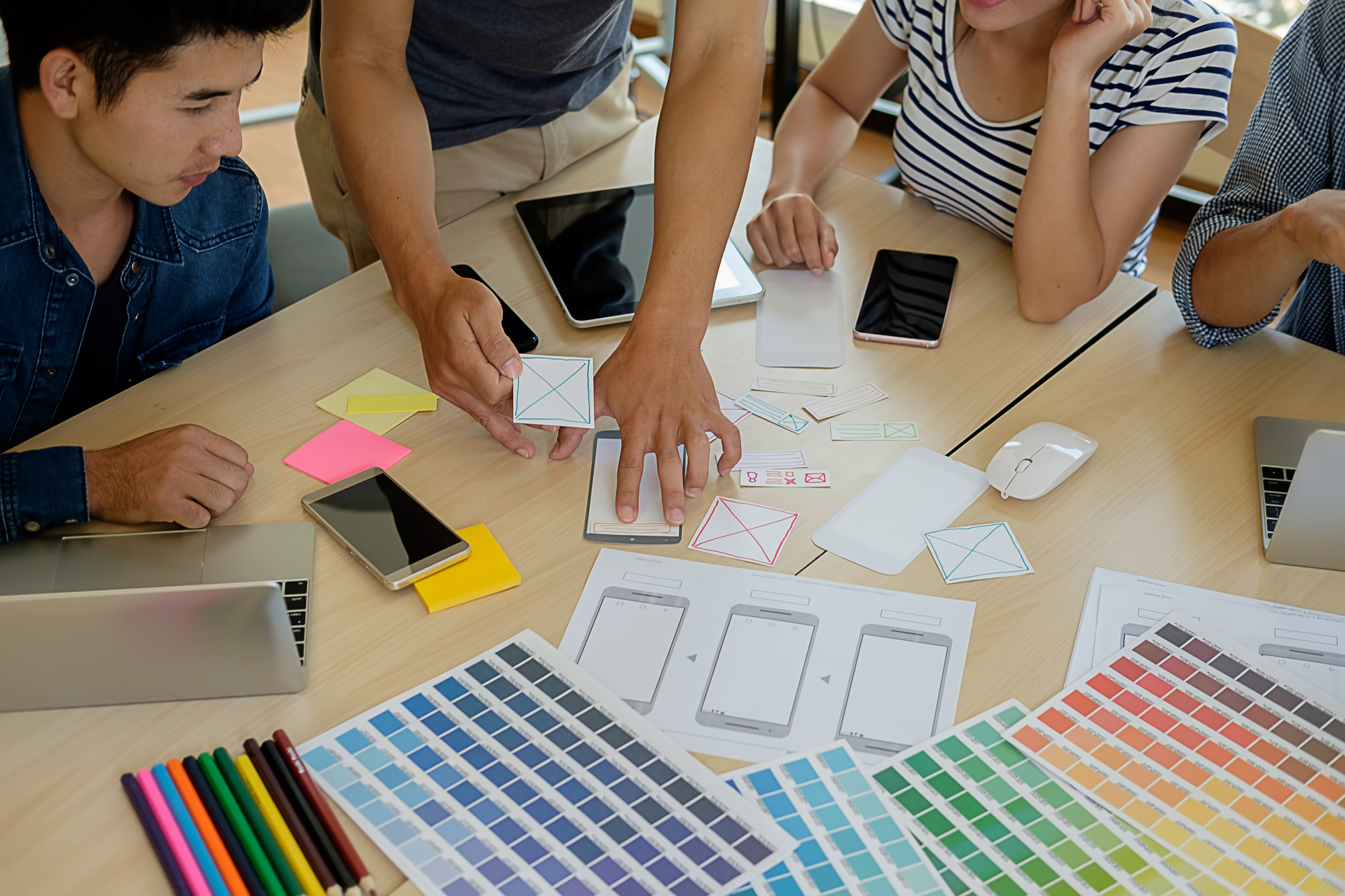Table Of Content

With the preliminary sketches as a guide, designers move on to the digital rendering phase. This involves using design software to translate hand-drawn sketches into digital formats. Designers experiment with various typography, color schemes, and visual elements, refining the design and iterating based on feedback and critique. Digital rendering allows for greater precision and flexibility in exploring design possibilities.
Art Direction – Paving a Clear Path of Creative Intent
In case you’re a business owner trying to make your own logo, this step of the logo design process does require technical knowledge of design software. Although these don’t have the features or complexity to create a substantial logo, they do have the bare minimum of what you need. If you already have some logo ideas, you might be tempted to jump ahead into logo design software. But before you start zeroing in on your final design, take some time to sketch plenty of ideas. Sketching is cheap, easy and fast, but most importantly, it’s an effective brainstorming tool.
Get feedback.
Find out how to edit a logo like a straight-up pro with these essential steps. Whichever font you choose, consider steering away from the generic ones such as Times New Roman or Comic Sans or Calibri. These fonts are used everywhere, and they'll do nothing to make your business stand out.
Never forget that utterly ridiculous Pepsi logo design document - Creative Bloq
Never forget that utterly ridiculous Pepsi logo design document.
Posted: Wed, 29 Mar 2023 07:00:00 GMT [source]
Offer a Basic Style Guide
Transfer the refined sketches into digital design software to create clean and polished versions of the shapes and symbols. Pay attention to details such as symmetry, proportions, and consistency. The font style should align with the brand's identity and target audience. A clean and elegant serif font could suit a professional and sophisticated brand. On the other hand, a bold and modern sans-serif font may be more appropriate for a tech-savvy or edgy brand. Understanding the brand's values and the target audience's preferences is essential in making the right choice.
In either instance, it should clearly express what you do as a business. Many brands start with literal imagery for their icons and later redesign it to a symbolic element when they achieve notoriety. You can express the most intricate narratives with a symbolic element. You want your logo to express to consumers who you are, what you provide, and what you stand for. And to do that, you have to incorporate your story and message into the design. Begin by asking yourself “why.” Why did you put up this business in the first place?
Step 5. Create digital drafts in vector software
Logo Love Episode Three: Inside The Design Process - Front Office Sports
Logo Love Episode Three: Inside The Design Process.
Posted: Thu, 16 May 2019 07:00:00 GMT [source]
Ideally, you’d present these boards to other members of your team or to a decision-maker, and they’d help you narrow down to one direction. Avoid uploading large image files and then displaying them in a smaller size. This maintains quality while also uploading a smaller file onto the site. Whether it's the Adidas three bars or the iconic golden arches of McDonald's, the world of logo design is filled with imagery synonymous with brand names and companies. While it's often difficult to find the perfect representation for your business, you can find help with logo design.
The Branding Process Steps
Whether you just made your logo design last week or already have had it printed on company clothing for years, these tips are useful. Once you have gained a following, you can either maintain this visual, refine it, or adopt a more symbolic take to your brand. Depending on your preferences, your icon can take on a metaphoric or literal depiction of your brand.
How Your Brain Processes Logos [Infographic]

Occasionally, we will have more questions at this stage to further extract detailed feedback from the client. Printing is always recommended as their monitor may not show colours accurately, and the embedded print profiles allow for a more accurate representation. Consideration of ‘how’ the logo may know in future is taken, for we believe a logo should be timeless rather than create issues down the line or appear dated in just a few years. We will show how the logo looks on various background colours, at different scales and alongside some logo mockups, such as a design rendering on a uniform or vehicle wraps.
Choose your colors.
Only then can you serve their expectations and needs in your design. Your logo should be versatile enough to work across various backgrounds and colors. Test your logo against multiple backgrounds and mediums to ensure legibility and clarity in all possible scenarios. It’s better to follow the process through to completion and end with a remarkable logo than to start over a few months later due to a design error or change of heart. Stay away from generic fonts that come standard on every word processor.
A combination mark integrates text with an icon, offering versatility by combining a brand name with a memorable symbol. This type of logo provides clarity in brand messaging but may become overly busy if not carefully designed and could face challenges in scaling down for smaller applications. Pictorial marks, also known as logo symbols, are logo types that rely on a single image to represent a brand. Use tools like Thesaurus.com to discover synonyms and other words that describe your brand’s central theme. Aim to choose five to ten words that best describe your brand’s ethos and use them to guide your logo design.
Having all the necessary information about what makes an excellent logo is great. However, designing a logo from scratch still isn't that easy, which is why you should consider using a logo maker. All you have to do is enter your business name along with a slogan, a tagline, or any other text you think might be relevant and viola! In just a few seconds, you'll get dozens of high resolution, transparent, and black and white logos that are ready to use.
The industry standard for vector graphics editing software is Adobe Illustrator—but it doesn’t come cheap and isn’t necessarily novice-friendly. Discover which color will elicit the feelings you want from your audience. It’s no coincidence that blue is a popular choice for banks, credit cards and software. Companies like Whole Foods and BP use green in their branding to strategically communicate a level of care for the planet. This question probably conjures up vivid images of a famous swoosh or an apple with a bite taken out of it.
You’ll start to notice certain threads or themes you like, and you can mix and match different elements until you settle on the perfect one. Learning about the process of logo development will help you see and understand how a professional logo is born and what steps it requires from the customer and the designer. A logo is more than a design; it’s an emblem of your brand’s identity.
Now, before we talk about each and every step that led my to that final design, it’s important to briefly remind ourselves what makes a great logo in the first place. And I will do so on a real case study—A logo and identity i designed for one of my recent clients. CorelDRAW is an alternative to Adobe Illustrator that offers nearly all the same functionality and allows you to transform sketches and ideas into fully-fledged logos. Designer and typography guru Laura Worthington hits the nail on the head regarding the importance of font selection.
When considering file formats for different use cases, it is crucial to understand the requirements of each medium and choose the format that best meets those requirements. Selecting the correct format ensures your logo looks professional and consistent across various platforms and mediums. Consistency across different platforms and applications is vital.











